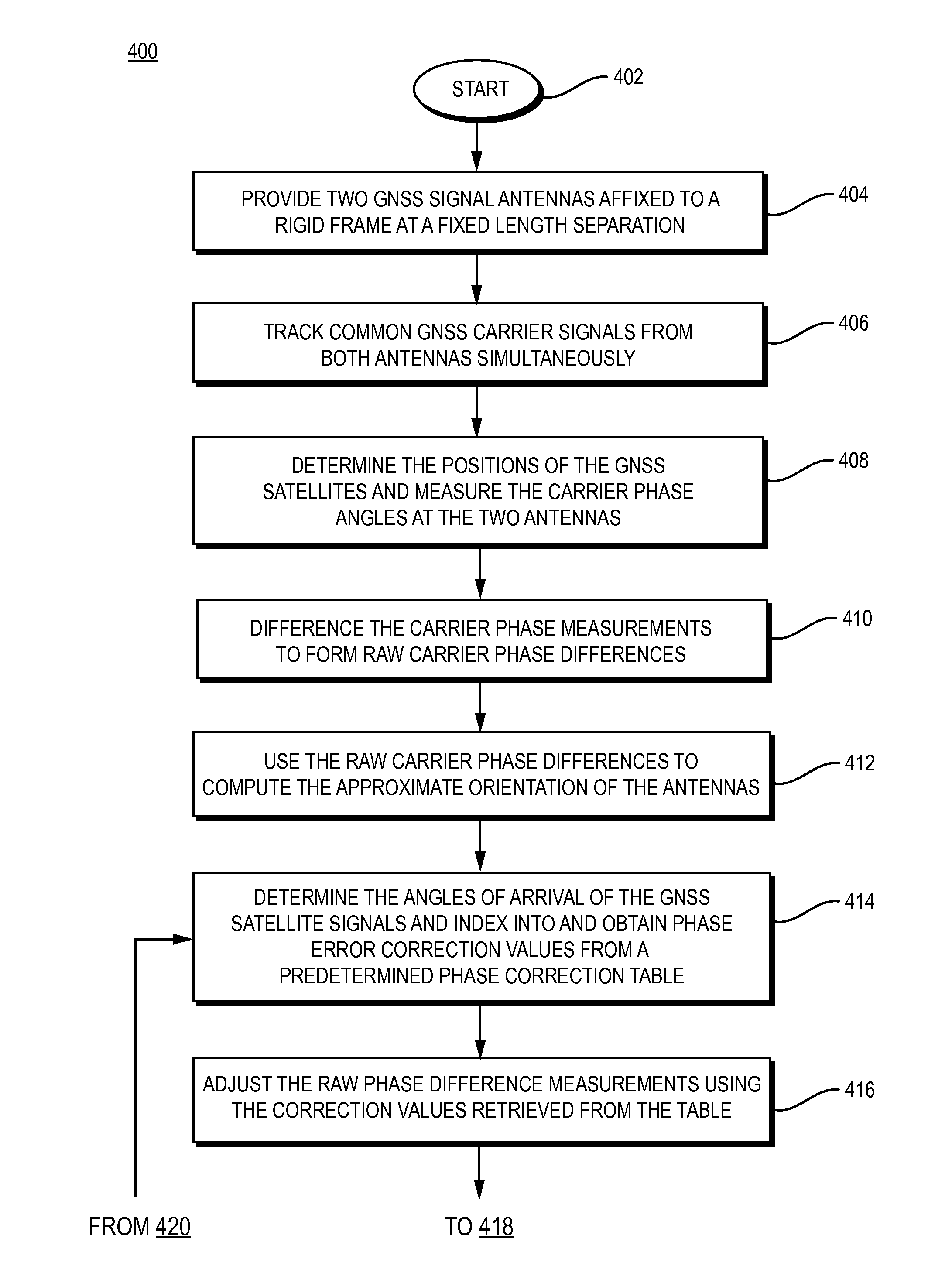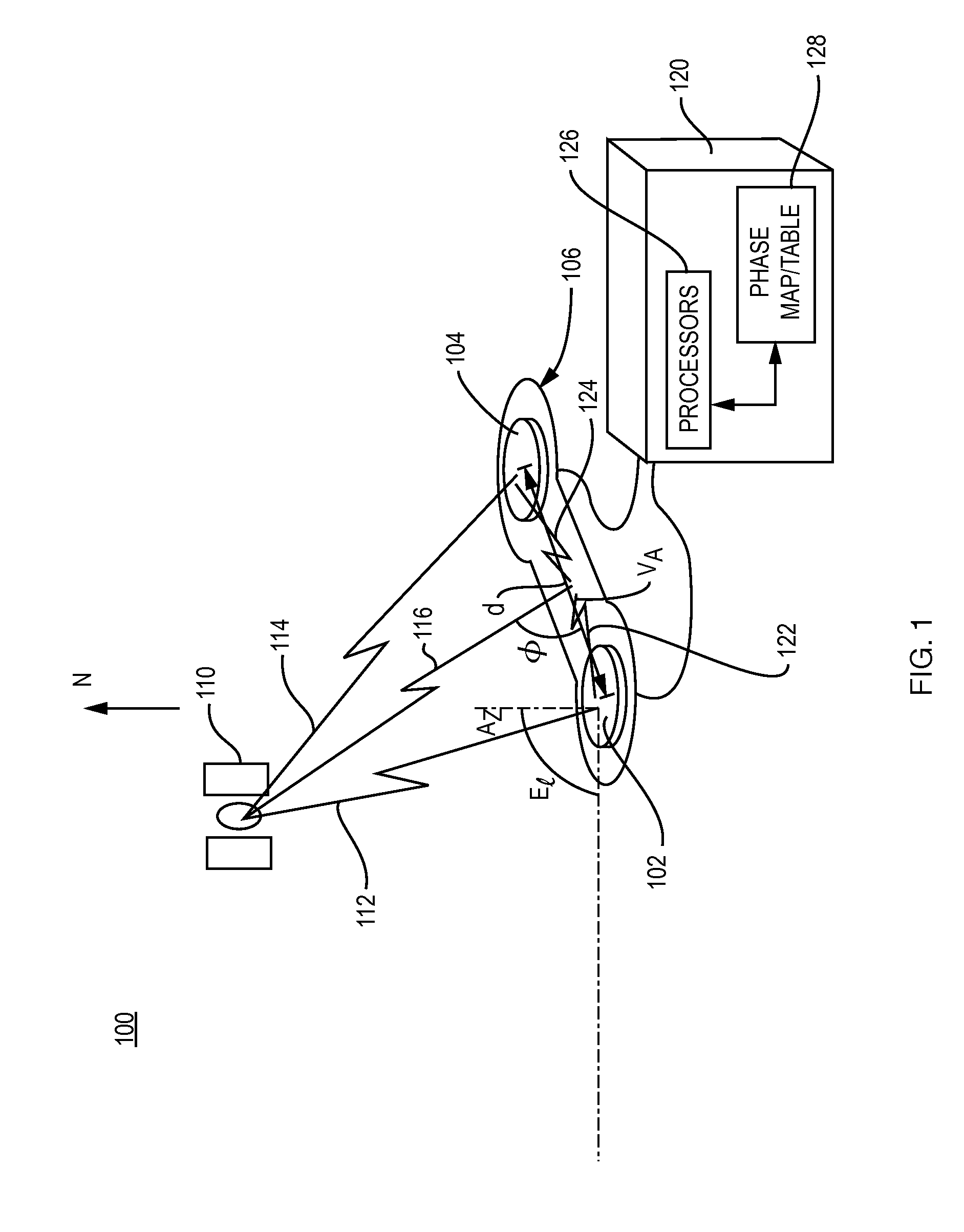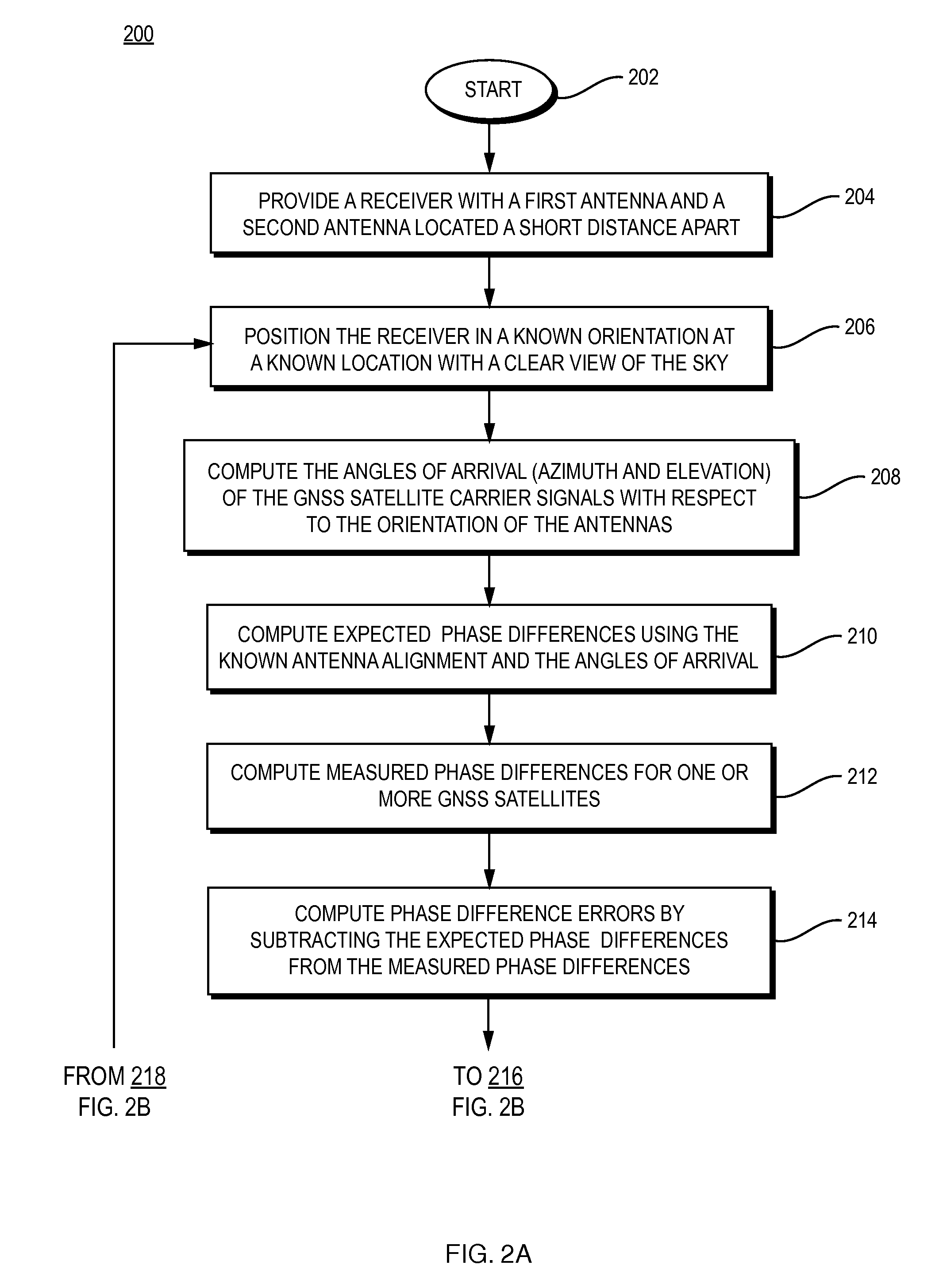Short and ultra-short baseline phase maps
a baseline and phase map technology, applied in satellite radio beaconing, measurement devices, instruments, etc., can solve the problems of affecting the reception of signals, the proximity of the antenna, and the adverse effects of the fixed baseline system, and achieve the effect of greater accuracy
- Summary
- Abstract
- Description
- Claims
- Application Information
AI Technical Summary
Benefits of technology
Problems solved by technology
Method used
Image
Examples
Embodiment Construction
[0017]FIG. 1 is a schematic illustration of a short baseline receiver 120 that receives GNSS satellite signals transmitted by a GNSS satellite 110, in accordance with an illustrative embodiment of the present invention. More specifically, the system 100 of FIG. 1 includes dual antennas 102 and 104 that are shown mounted on a rigid frame 106. The antennas reside a relatively short distance apart, as illustrated by the dimension “d.” The operations of the system are described for the dimension d greater than one wavelength of the GNSS signal and also for the dimension d less than one wavelength of the GNSS signal. Further, an array of more than two antennas may be utilized with each antenna a distance d from its neighbors. For ease of explanation the system is described as utilizing the dual antennas.
[0018]The GNSS satellite signal is represented schematically as signal path 112, which is received by antenna 102, and signal path 114, which is received by antenna 104. The lengths of th...
PUM
 Login to View More
Login to View More Abstract
Description
Claims
Application Information
 Login to View More
Login to View More - R&D
- Intellectual Property
- Life Sciences
- Materials
- Tech Scout
- Unparalleled Data Quality
- Higher Quality Content
- 60% Fewer Hallucinations
Browse by: Latest US Patents, China's latest patents, Technical Efficacy Thesaurus, Application Domain, Technology Topic, Popular Technical Reports.
© 2025 PatSnap. All rights reserved.Legal|Privacy policy|Modern Slavery Act Transparency Statement|Sitemap|About US| Contact US: help@patsnap.com



